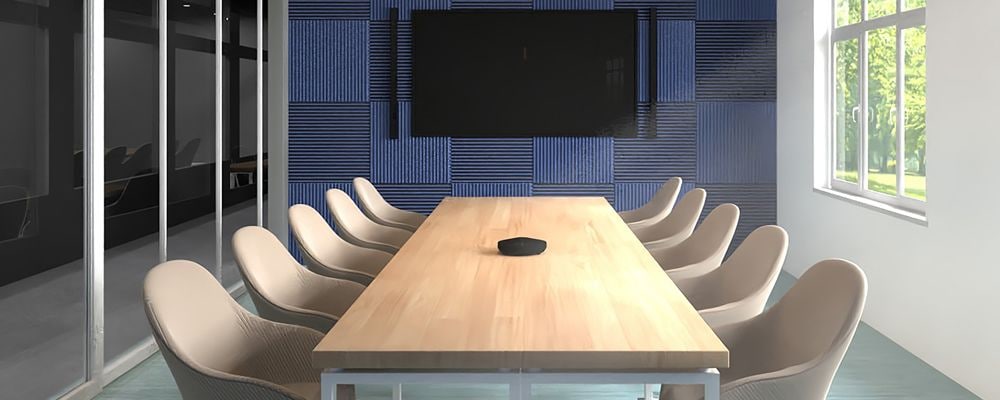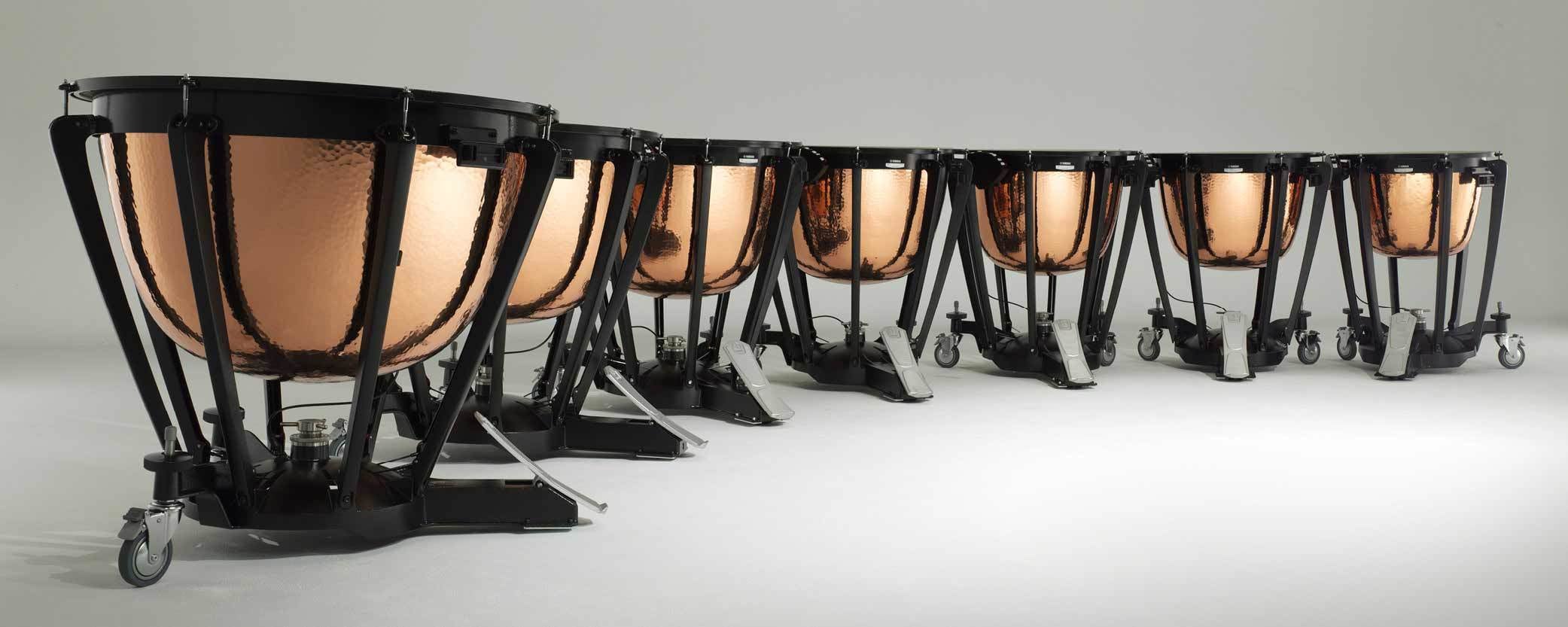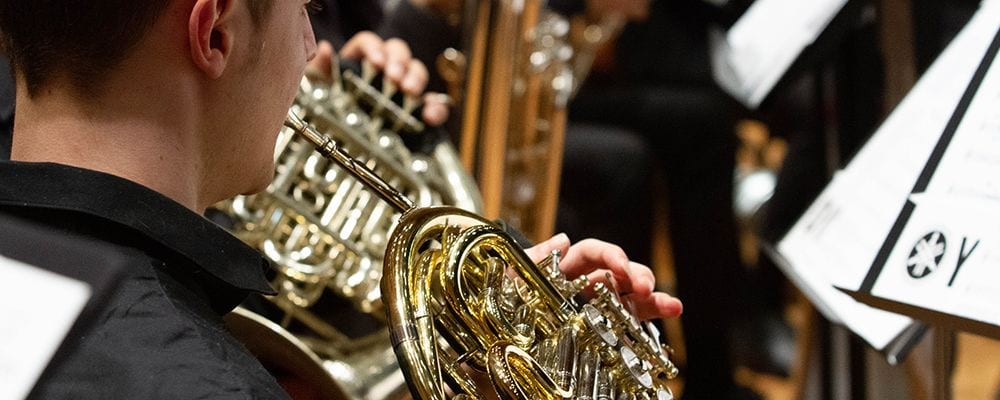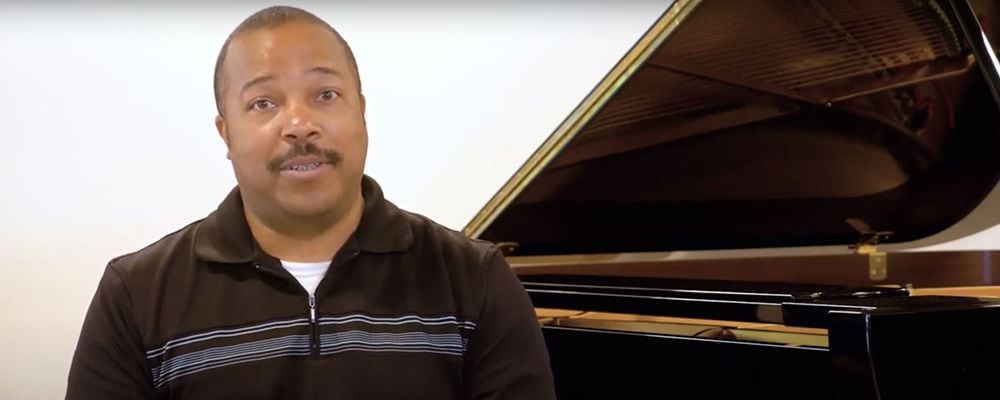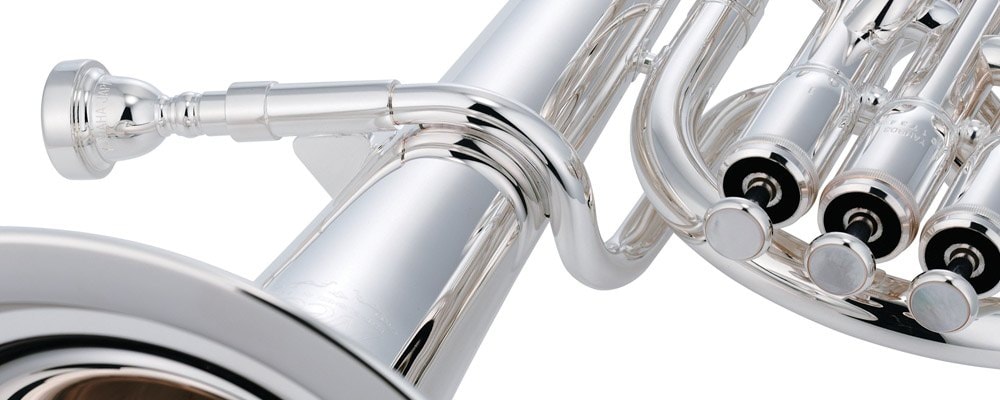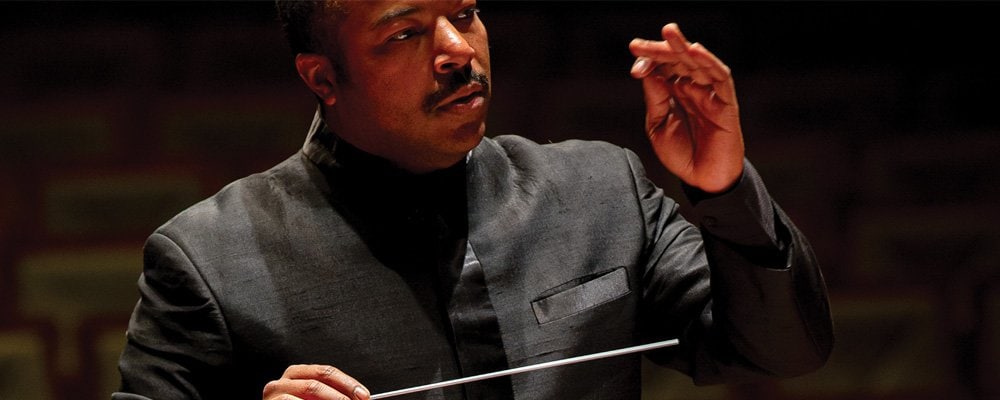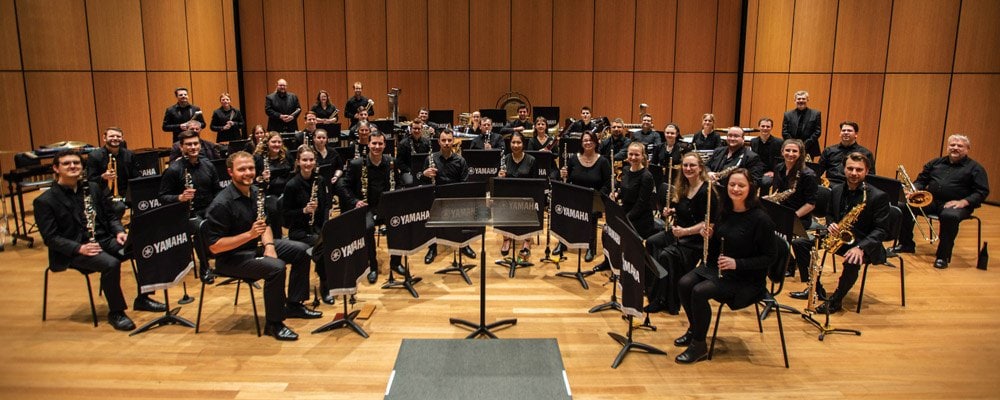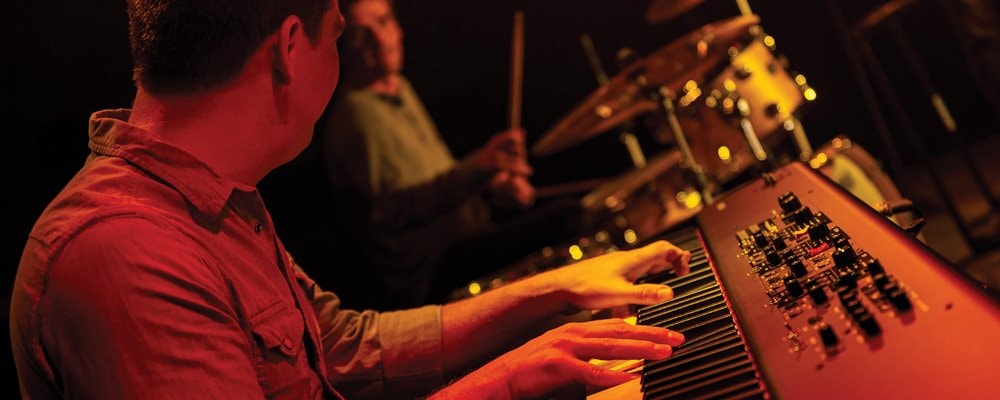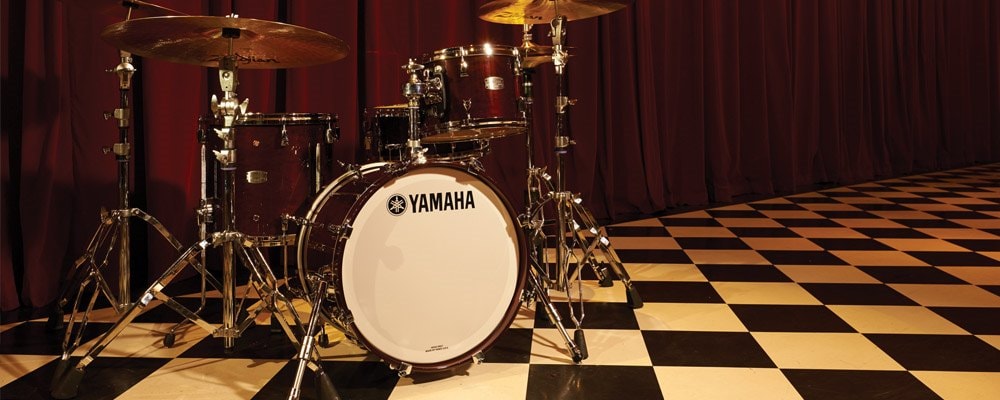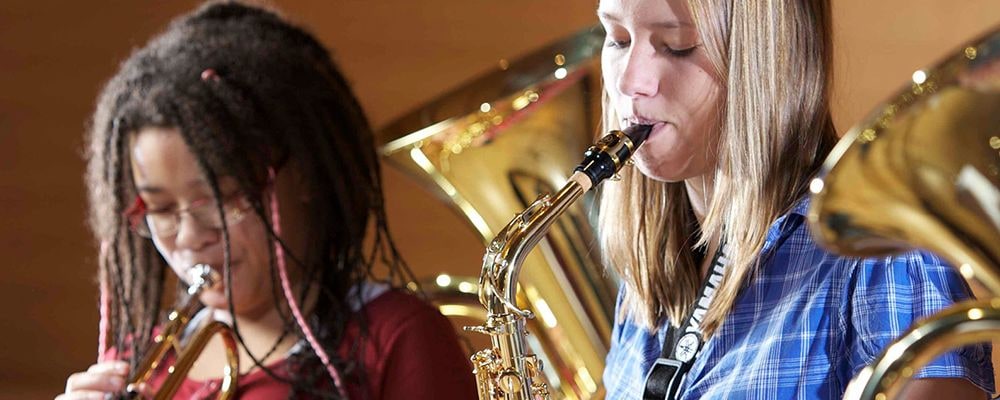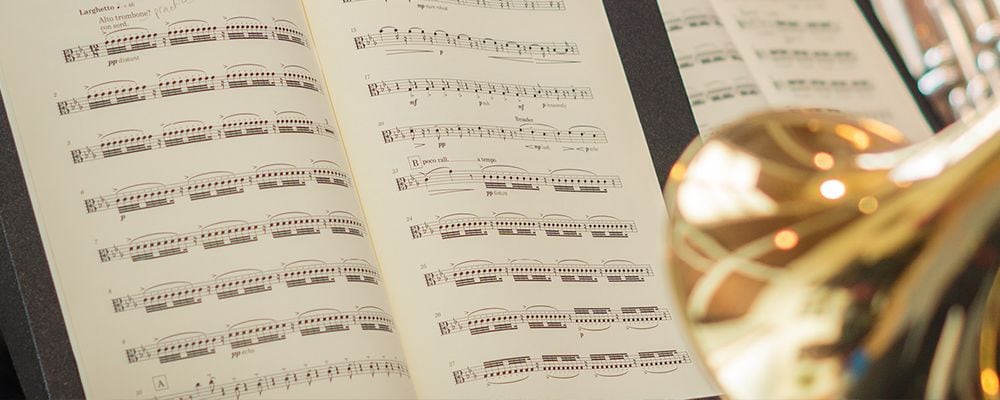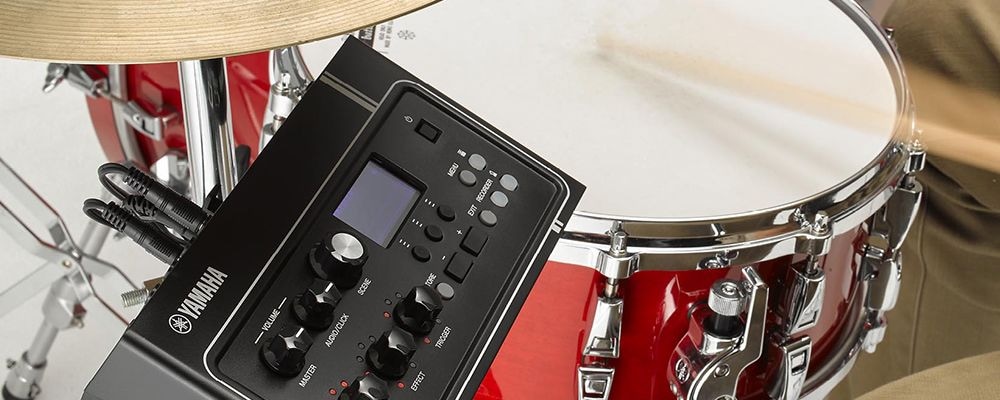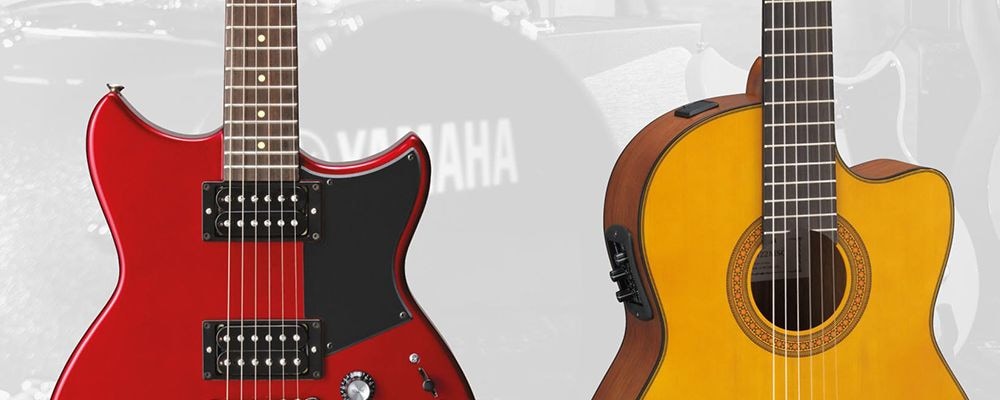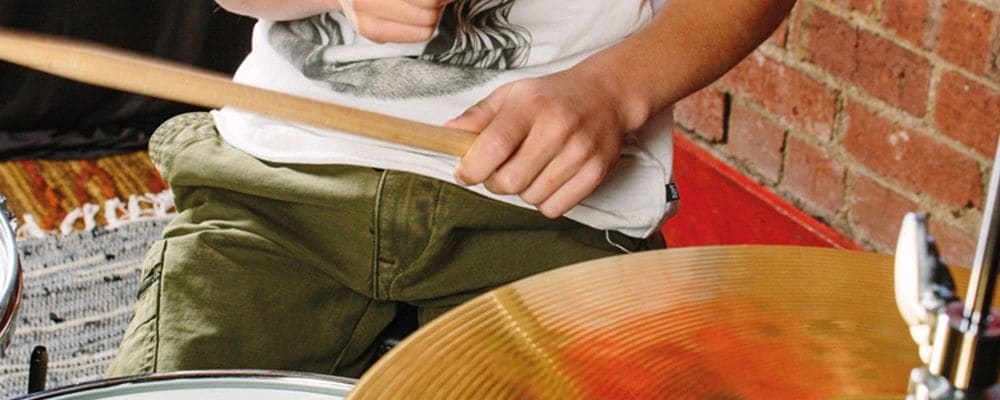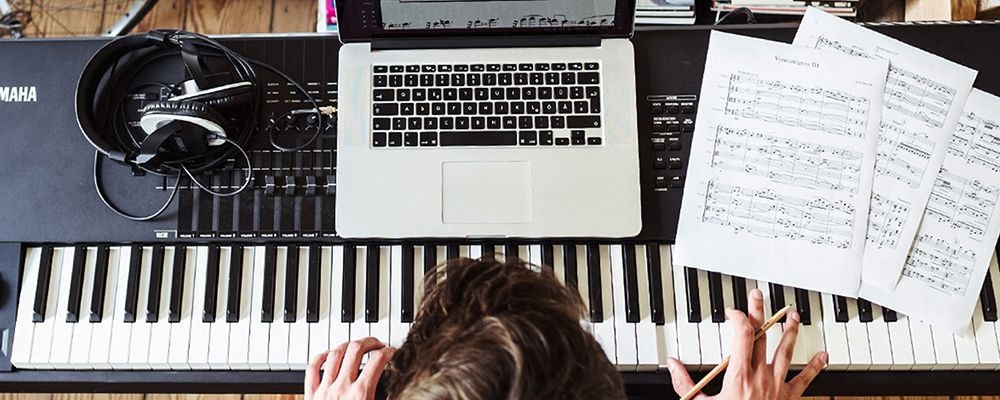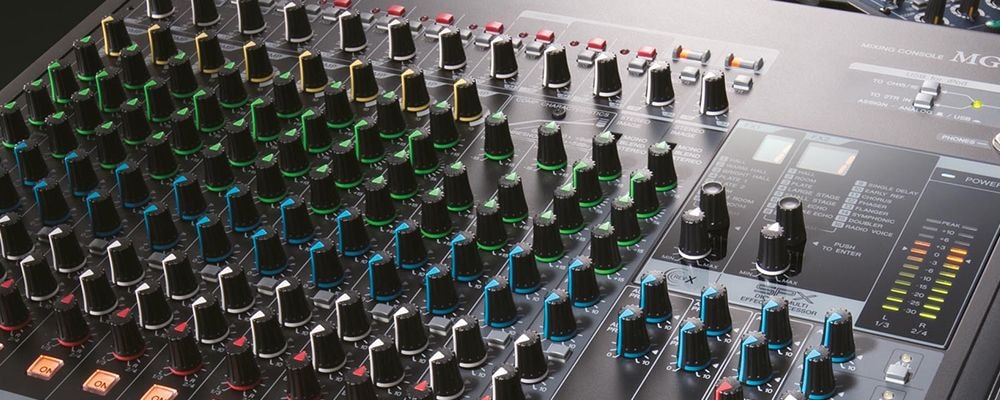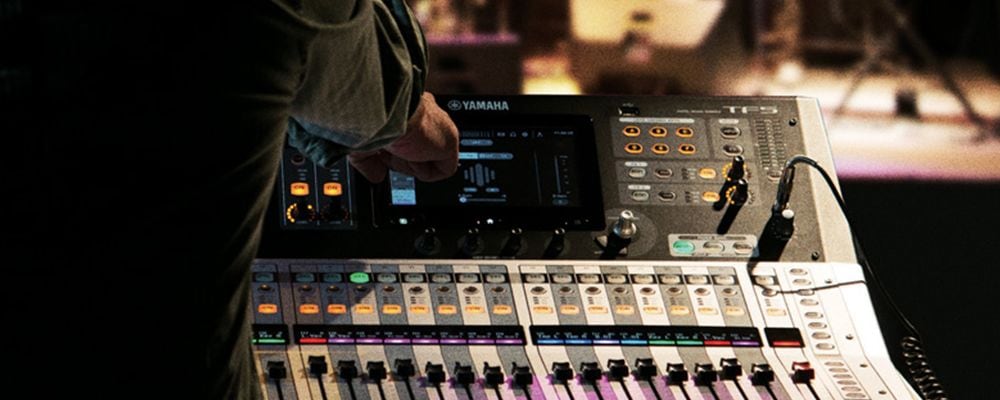
10 Reasons to Buy Yamaha Brass and Woodwind Instruments
Whether you're a beginner or a seasoned professional, Yamaha brass and woodwind instruments are a reliable, high-quality choice for musicians at every stage.
Music teachers - classroom and studio alike, we are a special breed!
We are all in the game of giving – nothing could be truer – teachers give and give and receive very little back but how wonderful is getting up and going to work when your workplace is one of enjoyment, collaboration, and growth for yourself and students? Simply from knowing the team you work with are all on the same page.
A Maintenance Guide for Timpani for Non-Timpanists
You have those large, loud, heavy drums in the back of your band room, but they don’t ever seem to be in tune or be able to stay in tune. What do you do to make them more reliable?
Can you Hear Me?
After the events of the last few years, we have all had to change and adapt to new ways of communicating remotely; digital communications have become the new normal!
Off to a GRANT Start
When studying to be a teacher, you have the opportunity to learn from the world’s best educators and musicians, but a university degree in teaching leaves teachers with significant knowledge gaps. One topic that is rarely covered but can be so powerful for a teacher and musician to know is how to successfully apply for grants. Here are a few ideas on writing a successful application.
Culture in a Music Program
A common feature of outstanding school music programs is a strong sense of collective, positive culture that surrounds and supports the musical activities of the program. One aspect of these strong cultures is the strong sense of belonging, commitment, and fulfillment experienced by those participating in the program. Senior high school students Campbell and Atharv generously provided powerful insights to these components in their schools’ music cultures.
Enabling Students with Disabilities or Diverse Learning Needs to Flourish through Music
Music is proven to improve social connections and emotional well-being, especially when introduced to children from an early age. For children with diverse learning needs, music can be life changing. Daphne Proietto OAM has years of experience teaching music to students with diverse learning needs, and provides invaluable advice to help bring music to the lives of children who need it.
Cultivating Creativity Through Developing Improvisation Skills
The ability to improvise is one of the most creative, enriching and fun things we can do as musicians, and can be an effective way to foster creativity for music students. Dr Leon de Bruin provides insight to developing improvisation within your music program.
“It’s My Instrument’s Fault!” - Reasons to Keep On Top of Maintenance
Brae Grimes discusses the importance of keeping brass and woodwind instruments in good working order, addressing longevity as well as the performance benefits of having a well-maintained instrument.
6000 parts, 230 strings, 18 tonnes of tension – are your pianos up to the task of music education?
Understanding the technical aspects of acoustic pianos is key for music teachers and facilitators of piano education. Piano Technical Manager Julian Morgan-Smith outlines how knowledge on this topic can help determine an instrument’s playability, usability, and functional lifespan.
Recruitment and Retention - A Year-Round Job
Recruitment is arguably one of the most important processes that a music department faces each year. We were lucky enough to speak to Sandie Rose-Castle and Dr Jemima Bunn, who gave us some incredible insight into their methods during the recruitment process and how to keep students engaged.
Back of the Room, Front of the Mind
It can be easy to overlook the percussion in a large school ensemble, but having a strong percussion section can greatly improve the overall quality of your ensembles. Jeff Jarrott explains key ways to make percussion tuition more efficient and effective.
More Strategies for Developing Internal Pulse in Your Ensembles
A solid and unified sense of internal pulse is a basic foundational skill for developing good ensemble performance at all levels. Leading on from his previous article on this topic, Prof. Rob McWilliams discusses more strategies for developing internal pulse in your ensembles.
My Favourite Tech Tools
Year on year, the list of innovative devices, apps and software designed for music education grows longer. These tools can be used to enhance efficiency, engagement and provide opportunities in the classroom. We spoke to several educators about what their preferred “tech tools” are, and why
Bare-bones of Instrument Maintenance
Apart from ensuring great performance, having a well-maintained instrument can prevent the build-up of bacterial growth and spread. Brae Grimes outlines basic and advanced maintenance concepts to introduce to your students during instrumental music lessons.
Finding the Balance: Navigating Different Teaching Methods
The social aspect of a group lesson, particularly in younger students, can make the whole experience more enjoyable and helps energise the students. Regardless of the method of delivery, it is undisputed that music is good for all students.
Sharing and learning music online
Online learning has become vital in keeping students actively engaged in music within their homes. Rebecca discusses how her students have benefitted from sharing and learning music online.
Five Tips to get your Students Songwriting
Songwriting can be an amazing tool to not only teach concepts of music but a way to help engage and connect with students of all ages. Here are five tips to get your students song writing in the first lesson
Concert Programming for Optimum Impact on Players & Audience
Following on from previous Off To A Great Start articles, Dr. Rob McWilliams discusses the next step of choosing a program of pieces that work well together to create a rewarding experience for both performers and audience.
Safety in Numbers
Ensemble playing in early development, and effective and informed recruitment processes are essential to establishing a successful music program.
10 Ways To Greet Your Instrumental Students!
‘Hello’ or ‘How was your week?’ can sometimes be a repetitive way to welcome your students each day or week! To better connect and help engage with your students, start your next lesson in a new way with these 10 alternatives to greeting your students.
It’s for Everyone! Tips and Tricks for Attracting New Members to your Community Band
Community music ensembles are wonderful places – full of people from diverse backgrounds and of different ages, with their own motivations for being involved. If you’re thinking about starting a community ensemble or are looking for ways to expand the membership of your current group, here are some tips!
Piano Lessons are like Swimming Lessons
‘When Should My Child Start Piano Lessons?’ – can be one of the most common questions asked to piano teachers. Whilst there is no golden answer, Samantha Coates offers us a great analogy to help answer this question.
Repertoire Selection for a Brighter Future
Rachel Howley explores the role that conductors can play in championing the wind band works of a more diverse range of composers.
Repertoire Throughout the Year – Planning with the End in Mind
Dr. Nick Williams shares some of his favourite wind band pieces, discusses the process of selecting pieces, as well as points to consider when you are selecting repertoire for your ensemble, with the end goal in mind.
E-flat is Where it’s At!
Find out why E-flat tubas and tenor horns should be taught alongside B-flat tubas and French horns in our schools, and how they can enhance school concert band programs.
The Future of Wind Bands is Looking Bright
An interview with Dr. Nicholas Williams to find out more about Melbourne’s latest wind band evangelist, and his big plans for the next generation of musicians.
Solving Saxophone Tonguing Nightmares
There is a spectrum of articulation that all good musicians require for their tonal palate, but developing a true, light, connected and flowing legato is the key to tonguing success. Once this is achieved, all other articulations will follow.
Choosing Repertoire and the Three “E’s”: Expression, Education, Entertainment
When choosing repertoire to play with our ensembles, it is important to keep performance and learning goals in mind. This article outlines some things to look out for to get the most out of your ensemble.
Keyboard Instruments Explained
Often, people don’t fully understand the differences between the various forms of electronic, keyboard-based instruments. The aim of this article is to bring some clarity, and to help you choose the instrument that is best suited to your needs.
Stevic MacKay - In His Own Words
An interview with guitarist, producer and music video creator for ARIA nominated band, Twelve Foot Ninja.
Sticks Aren’t Sticks!
All you ever wanted to know about drum sticks but were afraid to ask. Everything from materials, diameter, length and tip shape get to know what sticks will work for you.
Budgeting for a Successful Music Program
A handy guide on how to best organise your budget as a new music teacher. A bunch of handy tips on how to make the most of what you get.
The Popularity of Silent Pianos And What we Need to Know as Piano Teachers
In the modern era of piano teaching, the usual binary question of “digital versus acoustic” is now becoming a much more nuanced discussion. Furthermore, hybrid instruments – particularly Yamaha’s Silent Pianos – are a much broader offering for those students who may turn away from traditional acoustic pianos.
Preparing for a Long Life With Music
Often in schools we are so focused on recruiting for and retaining balanced ensembles, ensuring elective numbers are sufficient to keep the subject running, and supporting students in their preparation for exams and performances, that we run out of time (and head-space and energy) to consider: “what’s next for these students? are they ‘going on’ with music?”
Music And Your Brain
As instrumental teachers and ensemble leaders we see how learning a musical instrument transforms students. Little by little, in rehearsal and in performance, we observe the slow, steady and positive development of each student’s brain function. We know what it looks like, but if asked by a parent or school leader, could you explain why? Dr. Anita Collins looks at the research that tells us what is really happening inside our students’ heads.
How Yamaha’s Great Start Grant Changed Our School
In 2017 Apollo Bay P-12 College became the recipients of the Yamaha Off To A Great Start Grant program. Their principal Tiffany Holt tells us how it changed the students’ world.
A Balancing Act
A high school music educator shares six tips for managing work-life balance and being more productive.
Build It And They Will Come
It is inevitable that at one point in your career you will find yourself presented with a “fixer upper” music program. That is, a program with few students, high attrition and a difficult demographic. These are actually the kinds of programs that deserve the very best teaching and people skills. If we believe that all students deserve the chance to access quality instrumental music education, then it is our responsibility to make these programs functional. And it can be done! Dr. Heather McWilliams shares some the strategies you can apply to help turn a music program around.
Planning For Music Program Success
Planning for success first requires you to define what success sounds like in your school. From this base you can make planning decisions that will move your community towards this success. James Le Fevre shares some ideas that proved successful during a seven year stint as Director of Bands at a medium fee, Catholic Girls high school.
How To Enhance Teaching, Learning And Performance Through Free And Easy Apps
Today apps (applications used on smart devices and tablets) are commonplace. Most people use them on a daily basis for everything from banking to shopping. They are also increasingly being used to control electronic devices, proving to be a cost effective way to augment functionality and integrate intuitive operation. Musical instruments are no different, and apps like Yamaha’s Digital Piano Controller App now are available for keyboards.
Festival Ps & Qs
Appearance and demeanour on the stage and in the audience make an impactful statement about your ensemble during festival appearances. Performing at a festival is so much more than “performing the music.” This article brings together several etiquette recommendations for your next festival or more formal performance.
Improving Intonation In The Instrumental Ensemble
Making even incremental improvements in intonation can have a significant positive impact on the sound of any ensemble. The following tips, which increase in sophistication with each step, will help ensemble directors in the perennial pursuit of better pitch and intonation. Making improvements on these eight principles does take a willingness to invest in the process over time. Positive change will mostly be incremental but even very long and slow journeys start with small steps.
Recruiting & Retaining Low Brass Players
Many teachers struggle to recruit low brass students. The remedy is an overhaul of practices that may be working against your desired outcome. You need to build a culture whereby playing a low brass instrument is perceived to be a good choice, with a certain amount of status attached. You also need to put systems in place whereby low brass students feel musically fulfilled and supported. This article provides some tips that will help achieve this.
Strategies For Developing Strong Internal Pulse
A solid and unified sense of internal pulse is a foundational skill of effective ensemble performance. As I often tell student ensembles: “A right note in the wrong place becomes a wrong note!” Dr. Rob McWilliams suggests some warm-up and rehearsal strategies that can help to develop this skill.
The Ins and Outs Of Instrumental Recruitment
Balanced instrumentation is essential for optimum educational outcomes. It allows for the best possible sound and ability to play any appropriate repertoire, both of which provide the most satisfying experience for players, conductor ,and audience. Instrumentation that is not balanced in the recruiting stages leads to oversupply of the more popular instruments, resulting in limited opportunities for those players in the future. These tips aim to provide guidance in proactively controlling the recruiting process in order to end up with a balanced ensemble.
Warm-up Tips For Ensembles
Good tone, intonation, and a unified sense of internal pulse are foundational skills of effective ensemble music making. In addition to developing these skills in repertoire being rehearsed for performance, the ensemble warm-up particularly lends itself to specific focus on this important task. This article provides some helpful tips to develop these skills.
Your Student’s Next Instrument
It’s that time: an advancing student is kicking goals, approaching that next level of examination, or preparing for a landmark performance in their path as a musician. A student instrument, which was once ideal, is now inhibiting progress. To unlock this student’s full potential, an upgrade of equipment is now essential. An experienced student will choose an instrument that suits them, preferably through the process of playing and comparing a number of instruments side-by-side. Brae Grimes runs through features and specifications that are ideal for the intermediate brass or woodwind player, and beyond.
Balancing Guitars In The Mix
It’s just as well that guitarists love to talk about their instruments, because many bandleaders don’t. Not even when they need to. Often bandleaders (and even the players themselves) lack the specialist knowledge required to manage the guitar as part of a larger ensemble. But never fear! Information is power, and these elementary tips can help transform all that “noodling” energy into useful musical contributions.
Introducing the EAD10
It’s not often that a new piece of equipment comes along that can completely change the way you interact with your instrument, but that is exactly what Yamaha have achieved with their new EAD10 electronic acoustic drum system. Whether you are a drum student, teacher, hobbyist, or professional this system makes practicing, teaching, performing and recording your acoustic drum kit inspiring and fun.
Learning Life Lessons While Learning Guitar
Learning an instrument is about more than simply playing music, as amazing as that experience is on its own. It also has an incredible way of shaping who you are as a person. Here are some ways music can help you grow.
Sorting Out Cymbals
Never before have consumers had so much choice. But without the right information, choosing the best product can be a daunting task. This is very much the situation many beginning drummers find themselves in when choosing their cymbals. To help navigate the selection process as painlessly as possible, here we look at the options available from the premium European cymbal manufacturer Paiste.
Yamaha Rydeen Drum Kit
The Yamaha Rydeen kit was re-released in 2017, the year the company celebrated its 50th anniversary of making drums. Yamaha has always made the Rydeen rich in features, while keeping it in a price range occupied by many brands offering less quality and less features. At this level, the new Rydeen series is unmatched in quality, sound and price and a perfect drum kit to learn on. Darran Muller reviews the new Rydeen kit.
Film Scoring Evolution And Education
With the rise of technology and its integration into the arts, engineers and musicians have combined their skills to invent new machines, new instruments and new ways of composing music. But music wasn’t the only art form affected by the Industrial Revolution. With the invention of photography and the moving image, people were able to manifest their creative visions beyond books, theatre and performance. Tamara Partridge looks at the evolution and techniques of scoring.
Introducing Dorico - Where Great Things Begin
Released in October 2016 amid much hype and anticipation, Dorico is a next-generation scoring application developed by Steinberg. While existing scoring software battles with the legacy of dated code and fixes, Dorico 1.0 is poised to revolutionise how musicians write and engrave music.
Mixing 101
The heart of the live sound system is the mixer. The mixer’s basic function is to mix the live sources from the stage to produce a good balance for everyone in the audience to hear. A simple analogue mixing console provides basic control over the sound sources, allows the operator to mix them together and control the overall output level of the mix.
Sound Systems 101
A beginner’s guide to mixing and sound production, taking you through the basics of what a PA system is and how to effect the sound with an equaliser, compressor or reverb.
Unlocking Creativity in Composition
The creative tools you use have a big impact on the creative journey you and your students take, so it’s important to know you are using the right tool for the right job.




